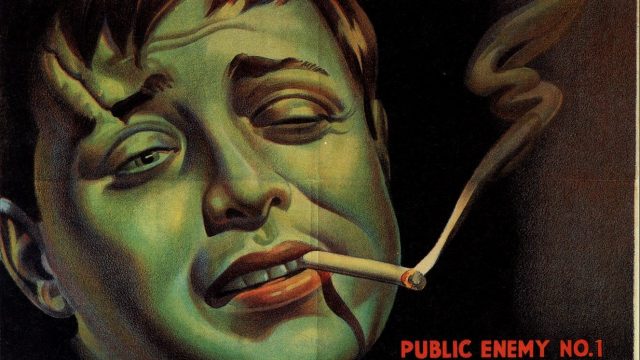The Man Who Knew Too Much (1956) gave the world “Que Será, Será,” and for that alone, it’s notable, but it’s also a fun, thrilling Jimmy Stewart/Doris Day flick. That’s the version most people know, but I was curious how the original 1934 version measured up. Sadly, I have to agree with Alfred Hitchcock’s own quippy assessment that it was made by a “talented amateur” as opposed to the “professional” who made the 1956 version. It’s a film play-acting at being Hitchcock, where the stakes are no less than potentially preventing World War II, and yet I found it shockingly dull most of the time. Hadn’t tension been invented yet in the thirties?
I’m not familiar with a lot of thirties movies, especially thirties thrillers, so maybe I just don’t vibe with this decade of film. The lack of music bothered me, especially since so many of Hitchcock’s classics are associated with a memorable Bernard Herrmann score (including the remake!), although my default favorite Hitchcock, The Birds, also lacks music most of the time. But it’s also got killer birds! What does this have? No killer birds, just people talking in rooms without tense music to make me tense. I also found it hard to tell people apart sometimes because it’s a black-and-white movie where everyone is wearing black and white, and of course the print is bad, so it’s hard to tell where anything is happening.
The movie finally came alive for me in a sequence in a dentist’s office that offers a scary dentist decades before Marathon Man or Dr. Giggles. After following the clues, Our Hero ends up in what appears to be a normal dentist’s office with a normal dentist performing normal dental procedures, but it’s not long before he has a dentist fight! And then he gets the upper hand and gasses the dentist and then pretends to be him while spying on Peter Lorre, and it’s simultaneously suspenseful and goofy. You’re worried he could be found out at any moment, but there’s something deeply silly about this guy surreptitiously “performing dentistry” while eavesdropping on a conversation a few feet away. And now Peter Lorre, who was randomly around in the opening scenes, is revealed to be the villain of the piece, but we knew that because he’s Peter Lorre.
One reason I was particularly excited to watch this movie was Peter Lorre and, thankfully, he did not disappoint. He’s wonderfully sketchy in this film, and he underplays his villainy quite well, always remaining cool and collected, even when he’s subtly threatening the life of a child. You’d never guess, though, that he was not yet fluent in English at this time and delivered all his lines phonetically. He has all the right intonations, punctuating the right words with sinister menace.
There is no hint of sinister menace in one of the strangest scenes in the film. At one point Our Hero follows the clues to the temple of a sun-worshipping cult (why not?) and becomes embroiled in…a chair fight. It is hard to fully capture the ridiculousness of this scene in mere words, so I suggest you take a minute and watch it for yourself. In this scene from one of the grandmasters of suspense, men just start…throwing chairs at each other. Entire chairs. They just throw the chairs at each other. Very easily breakable chairs. It looks completely and utterly fake, and it has no real sense of pacing beyond…men throwing chairs at each other. A woman starts playing an organ to drown out the noise. Why is this happening. Jimmy Stewart never threw a chair anyone, I’ll give this movie that.
The opera house sequence, so famous in the remake, is solid here as well, with some of the best editing in the film. Whereas many other scenes — like the aforementioned chair fight — have a stultifying rhythm, this one captures the impending threat of assassination as Edna Best searches for the assassin and wonders what she can do. The cutting from various instruments to her, the assassin, and his target really amp up the suspense, and it all comes to a head in a cool dissolve from her blurry vision to the tip of the assassin’s gun. Maybe there was tension in the thirties after all.
Edna Best’s role represents one of my major disappointments with this movie, and that is that the movie is not about her. She’s a fucking sharpshooter! She’s the one who gets the secret message to begin with! I found her far more interesting than Our Hero — who, to be fair, is fairly clever occasionally — and I would rather have watched The Man Who Knew Too Much’s Wife. At least she gets to save the day in a satisfying conclusion that calls back to the opening scenes and, again, made me wish the movie had focused far more on her.
Even though I wasn’t a huge fan of the film, it’s certainly a fascinating watch as it’s quite rare for a filmmaker to remake his own work in the same language. It happens a bit more often with directors of foreign-language films helming the English-language remakes, but I’m glad Hitchcock got a second chance to tell this story after becoming a more accomplished filmmaker.


